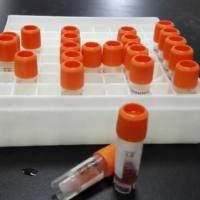FISH on Chromosomes Derived from the Snail Model Organism Biomphalaria glabrata
互联网
568
The application of fluorescence in situ hybridization (FISH) for the mapping of single copy genes onto homologous chromosome has been integral to vast number genome sequencing projects, such as that of mouse and human. The chromosomes of these organisms are well-studied and are the staple resource of most of the early studies conducted in cytogenetics. However, there are now protocols for analyzing FISH probes in a number of different organisms on both metaphase and interphase chromosomes.
Here, we describe the methodologies for the chromosomal mapping of nonrepetitive (single-copy) genes of the snail Biomphalaria glabrata onto metaphase chromosomes derived from the only molluscan cell-line in existence. The technique described in this chapter was developed for the B. glabrata genome sequencing project through troubleshooting experimental procedures established for other organisms so that both the optimum resolution of metaphase chromosome and the effective hybridization of genes were achieved.








